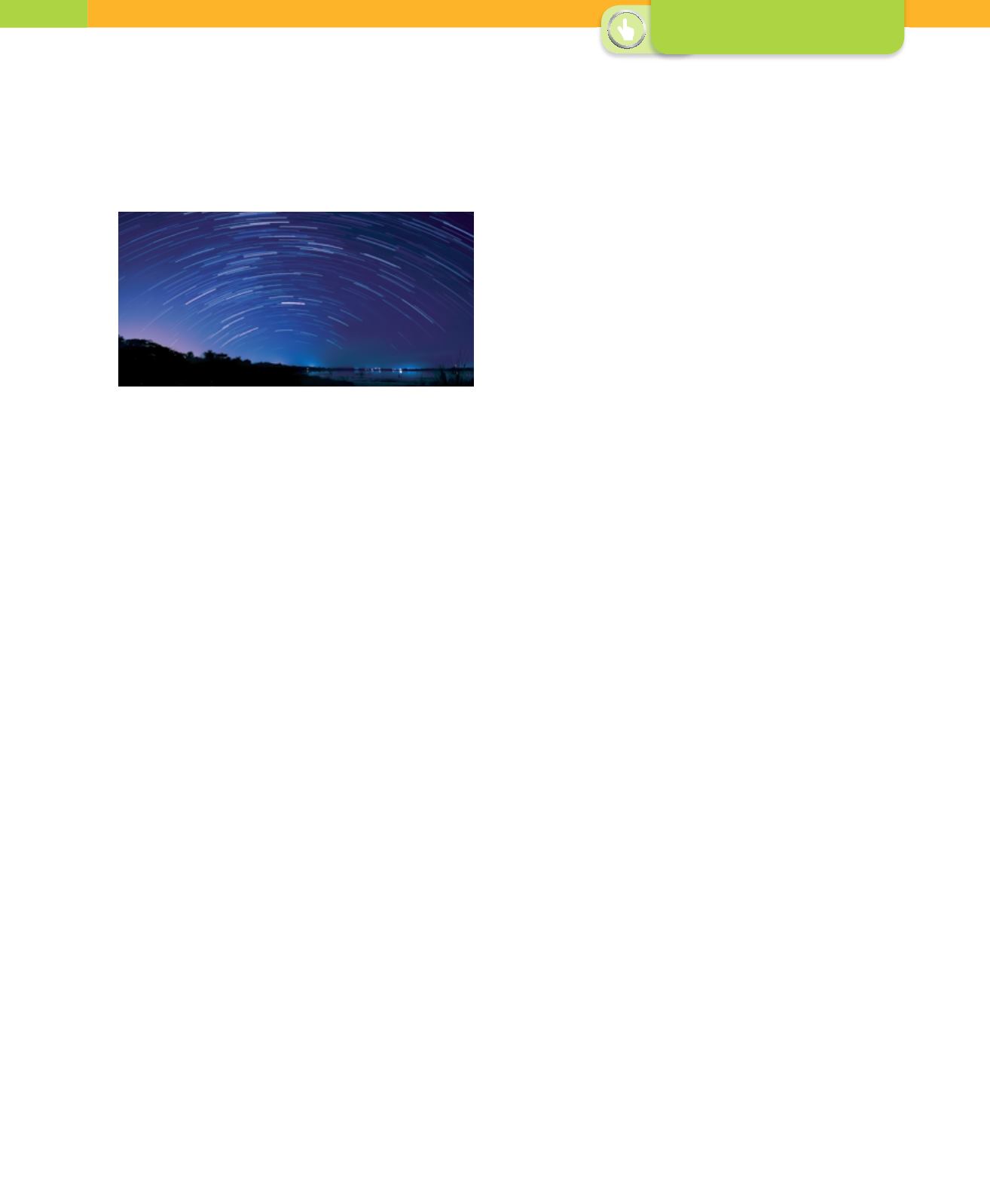
40
The Universe
33.
If we take a long-exposure photo of a night sky
without light pollution, we can see that the stars
appear to make different-coloured circles. Why do
you think this happens?
34.
In your notebook, draw two diagrams of the Solar
System: one with the Earth in the centre with
the Sun and the planets revolving around it; and
another, with the Earth revolving around the Sun.
35.
In ancient times, there were two theories that
explained how the bodies that make up the Solar
System are arranged. What are their names and
what do they both suggest?
Our galaxy
36.
On what factor does the brightness of a star
depend? What factors affect the colour of a star?
37.
Convert the distances between the Sun and the
planets (on the table on page 34) to millions of km.
38.
If we observe an open cluster and a globular cluster
with a telescope, which is brighter? Explain your
answer.
39.
When we observe the sky at night, it is possible to
see both stars in the Milky Way and planets in the
Solar System. How can we distinguish stars from
planets in the sky with the naked eye?
40.
Find out about the constellations that can be seen
this month in the sky in your area. Draw one of
them and write down the distance its main stars
are from the Earth.
The Solar system
41.
In your notebook, write if the following statements
are true or false. Correct the false ones.
a)
Planets are rocky bodies that move around the Sun in
orbits occupied by other bodies.
b)
The asteroid belt is located between Jupiter and Saturn.
c)
Comets orbit the Sun.
d)
The galaxy of Andromeda is in the Solar System.
42.
Find information about meteorites and shooting
stars. In your notebook, write a report that explains
what they are, where they come from, and the
difference between them.
Planets in the Solar system
43.
Match each planet of the Solar System to one of
the following characteristics.
a)
It is the outer planet with the smallest number of
satellites.
b)
It is the least dense planet.
c)
It doesn’t have an atmosphere.
d)
It has the second smallest diameter around its equator.
e)
Its day lasts approximately 17 hours.
f)
Its diameter around the equator is similar to Earth’s.
g)
It has only one satellite.
h)
It is the biggest planet in the Solar System.
44.
In a documentary about astronomy, an expert in
matter explained that the force of gravity exerted
by a celestial body on an object located in its
surface is directly proportional to the mass of the
object and the mass of the celestial body.
Can you guess on which planet in the Solar System it would
be easier for us to jump and on which it would be the most
difficult? Explain your answer.
45.
Find out and make a hypothesis that explains
why the outer planets have a bigger number of
satellites than the inner planets.
Movements of the Earth
46.
When is day and night the same length in Spain?
47.
During the 2010 World Cup in South Africa,
journalists commented on the cold weather. Why
was it cold in South Africa in the months of June
and July?
48.
If you observe the length of a shadow of the same
tree at different times of the day or year, you will
notice that it is not always the same.
a)
Why does this happen?
b)
In which season would the shadow be the longest?
c)
When would the shadow be the shortest: at sunrise,
midday or at sunset?
d)
When would the shadow point north?
49.
Find out the time of the sunrise and sunset in the
solstices and equinoxes last year, in the capital of
your province. Then calculate the length of day and
night on each of the days before. What conclusions
can you make from your results?
CONSOLIDATION


